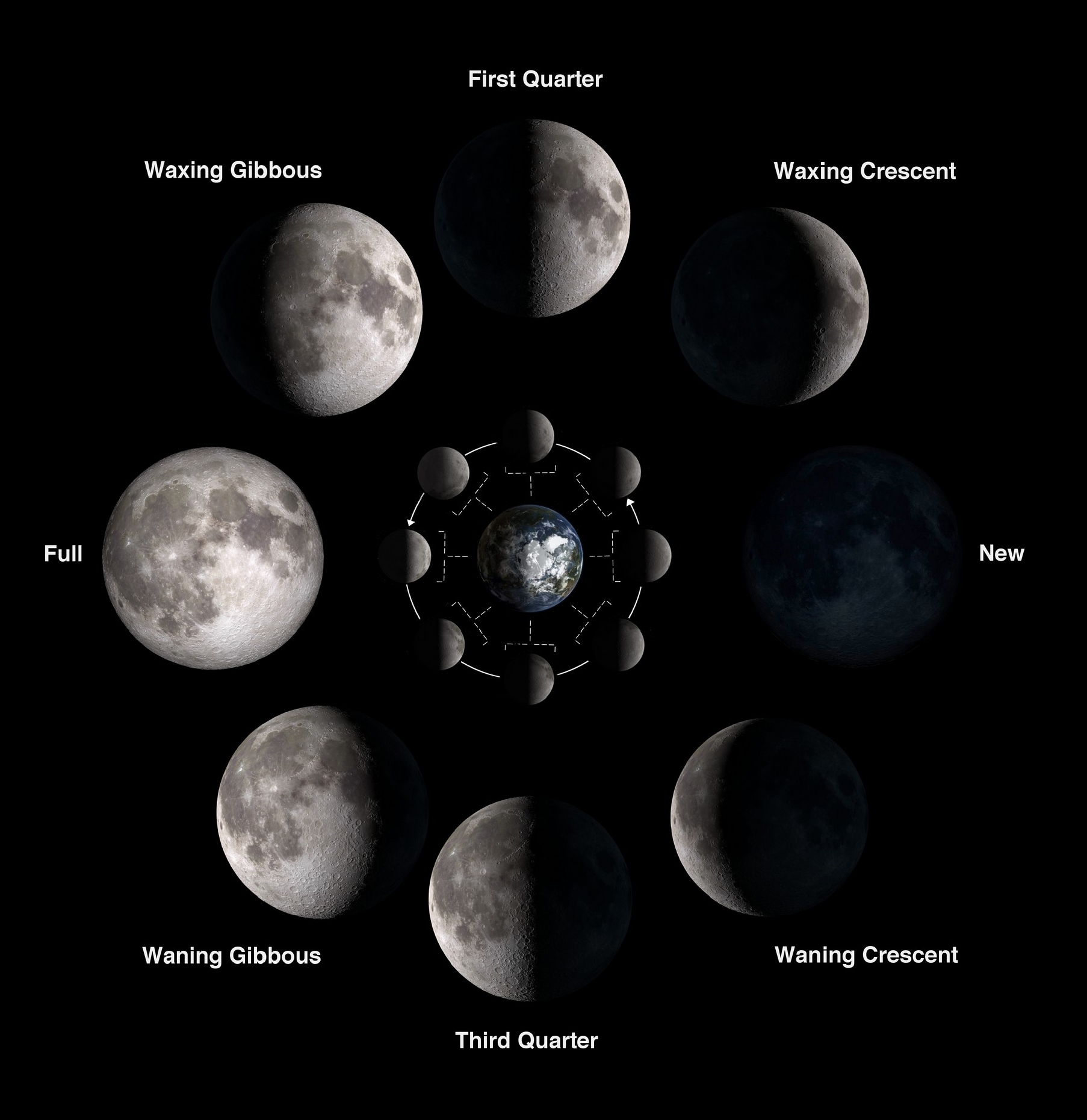Section 12.2 The Moon


1
solarsystem.nasa.gov/moons/earths-moon/lunar-phases-and-eclipses/The Moon [Figure 12.2.1.(a)] is Earth’s only natural satellite and the fifth largest moon in the solar system. It is approximately 384,400 kilometers (238,855 miles) away from Earth and has a diameter of 3,474 kilometers (2,159 miles). The Moon is thought to have formed about 4.5 billion years ago, shortly after the formation of the solar system, when a Mars-sized object collided with Earth. The Moon’s surface is covered in craters, mountains, valleys, and vast plains called maria, which were formed by ancient volcanic activity. The Moon has a very thin atmosphere, known as an exosphere, and has no active geological processes. The temperature on the Moon can vary from 253 degrees Fahrenheit (123 degrees Celsius) in daytime to -387 degrees Fahrenheit (-233 degrees Celsius) at nighttime.
Lunar Layers: The outermost layer of the Moon is composed of a layer of rock called the regolith. The regolith is made up of small rock fragments and dust that have been broken down over time by the impact of meteoroids and the bombardment of charged particles from the Sun. Beneath the regolith, the Moon is composed of several distinct layers. The outermost layer is the crust, which is about 30-40 km thick and is composed of a mixture of rocks, including basalt and anorthosite. Beneath the crust is the mantle, which extends to a depth of about 1,000 km. The mantle is composed of denser rocks than the crust and contains a small amount of partially molten material. Finally, at the center of the Moon is a metallic core, which is thought to be about 800 km in diameter. The composition and structure of the Moon’s interior have been studied through a variety of methods, including seismic measurements from Apollo missions, observations of the Moon’s gravity field, and computer simulations. These studies have helped to refine our understanding of the Moon’s formation and evolution, as well as its potential for future scientific exploration and resource utilization.
The Moon does not have a significant atmosphere like Earth’s, but it does have a very thin and tenuous exosphere. The exosphere is a layer of gas that is so sparse that its particles rarely collide with each other. It is made up mostly of particles that have been ejected from the Moon’s surface by impacts from solar wind and micrometeoroids. The exosphere is composed mainly of helium-4, neon, and argon, which are the lightest and most volatile elements found in the solar system. There are also trace amounts of other gases, such as hydrogen, helium-3, and methane. The total mass of the exosphere is only about 10 metric tons, which is less than a billionth of the mass of Earth’s atmosphere. The lack of a significant atmosphere on the Moon means that there is no weather, no wind, and no erosion by air or water. However, the exosphere does have some important effects on the Moon’s surface, such as influencing the behavior of charged particles from the solar wind and affecting the distribution of dust and other materials on the surface. The exosphere also presents some challenges for future human exploration and settlement of the Moon, as it can be difficult to manage and may pose health risks to astronauts.
The lunar landscape is characterized by a vast expanse of barren, rocky terrain. The Moon’s surface is covered in a layer of loose, powdery soil called regolith, which is composed of small rock fragments and dust that have been ground down by the impact of meteoroids over millions of years. The lunar landscape is marked by numerous impact craters, which range in size from small bowl-shaped depressions to vast circular basins hundreds of kilometers across. These craters were formed by the impact of meteoroids and other objects over billions of years, and their shapes and sizes provide important clues about the history and evolution of the Moon. In addition to craters, the lunar landscape also features several other prominent surface features. These include mountains, such as the towering peaks of the Montes Apenninus and the Taurus-Littrow Valley, as well as vast plains, such as the dark and flat lava plains known as mare (singular: "maria"). The Moon’s lack of atmosphere and weather means that its landscape has remained largely unchanged for billions of years, making it a valuable natural laboratory for studying the geology and evolution of planetary bodies. The Moon’s unique features and scientific potential have also made it a target for future exploration and potential resource utilization.
